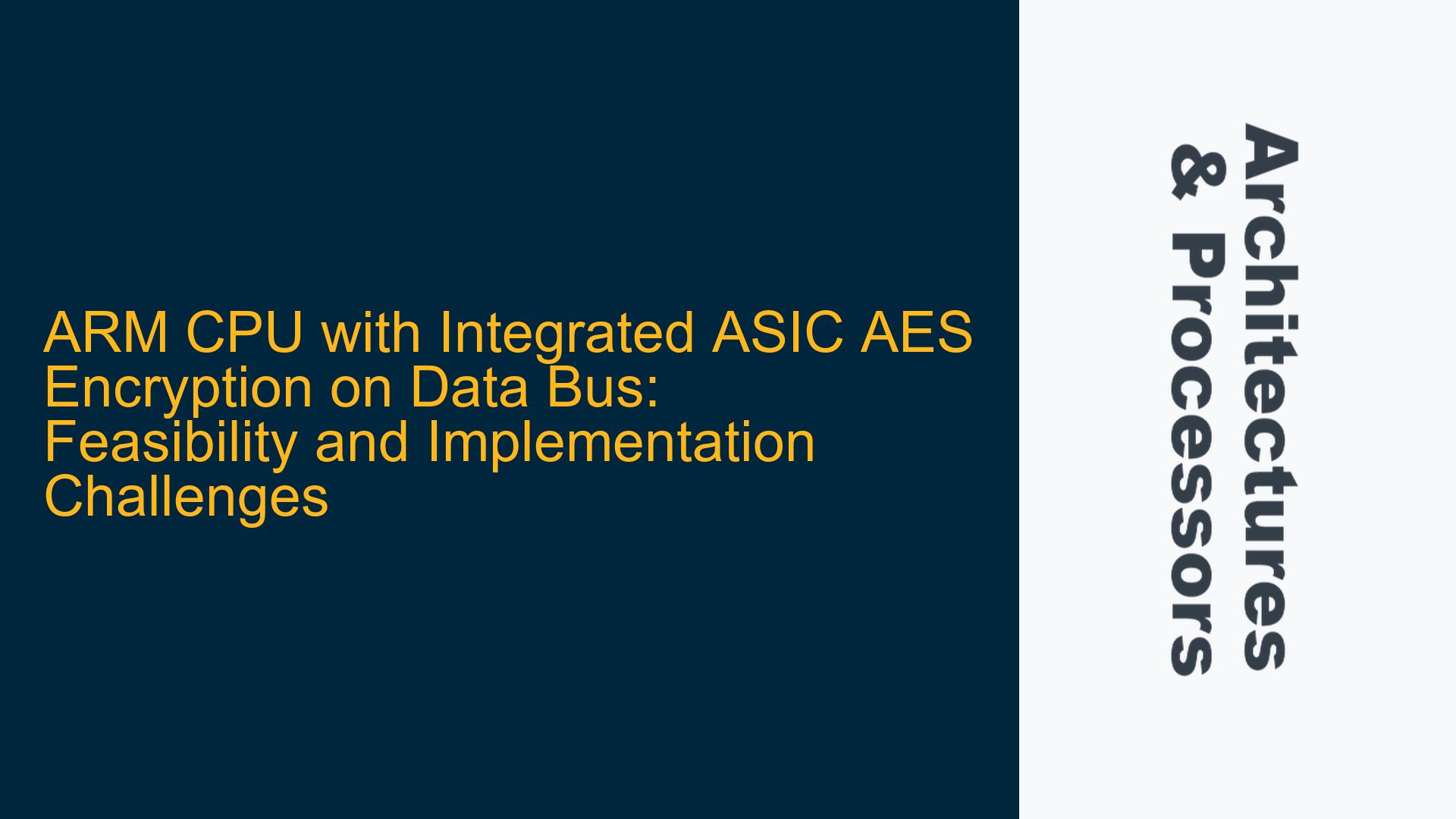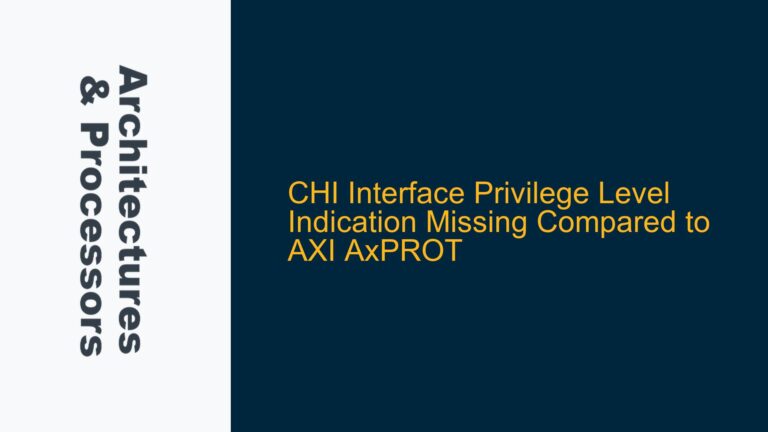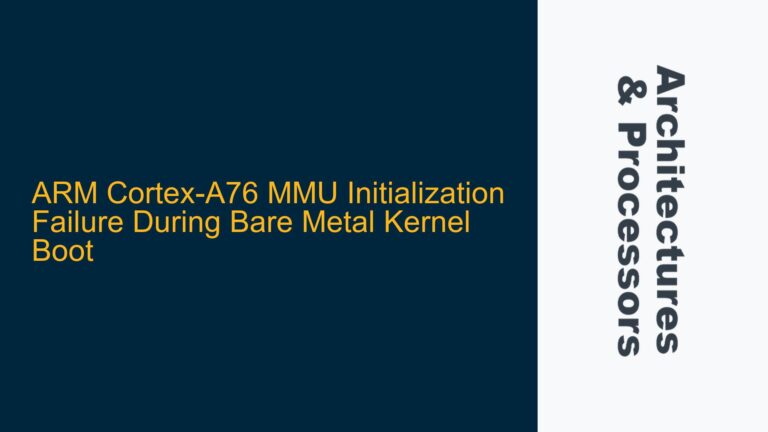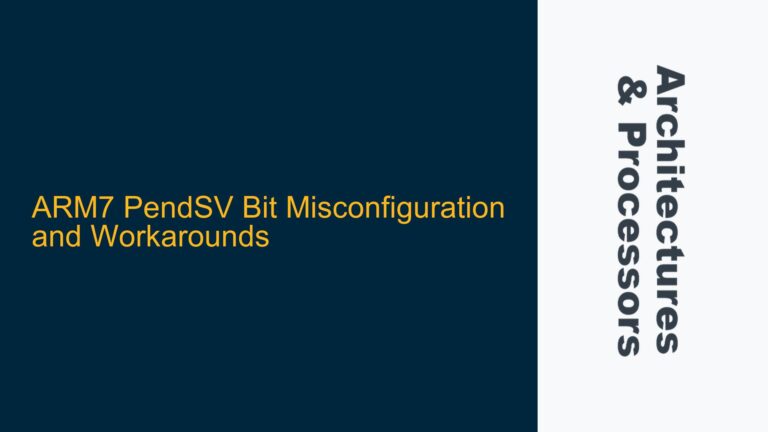ARM CPU with ASIC AES Encryption: Architectural Overview and Use Case
The concept of integrating an ASIC-based AES encryption engine directly into the data bus of an ARM CPU is an intriguing architectural proposal. The primary goal is to create a system where all data flowing through the CPU’s data bus is transparently encrypted before being written to RAM or peripherals, with the exception of specific regions such as the LAN buffer and boot sector tags. This design aims to provide hardware-level encryption for all data in RAM and peripherals, leveraging DMA for efficient data transfers while maintaining compatibility with operating systems like OpenBSD or Linux.
The proposed architecture involves placing the ASIC AES engine between the CPU core and the RAM interface on the data bus. The ASIC operates at the same clock speed as the CPU and uses memory addresses as initialization vectors (IVs) for the AES encryption process. The ASIC is designed to bypass encryption for specific memory regions, such as the LAN buffer, to allow communication with the external network. Additionally, the ROM and boot sector are pre-encrypted using the same AES function and key, with only specific tags (e.g., 01010101) left unencrypted to facilitate bootstrapping.
This design raises several technical questions and challenges, including the feasibility of integrating the ASIC into the CPU’s data path, ensuring proper synchronization between the CPU and ASIC, and managing DMA transfers in an encrypted memory environment. The following sections will explore these challenges in detail, identify potential causes of issues, and propose solutions to address them.
Data Bus Integration Challenges and Synchronization Issues
Integrating an ASIC AES engine directly into the CPU’s data bus introduces several technical challenges, particularly in terms of data synchronization, timing, and address handling. The ASIC must operate seamlessly with the CPU, ensuring that data is encrypted or decrypted without introducing latency or corruption. Key challenges include:
-
Data Bus Latency and Throughput: The ASIC must process 64-bit data blocks at the same clock speed as the CPU. Any delay introduced by the ASIC could result in data starvation for the CPU or RAM, leading to performance bottlenecks. The ASIC’s encryption logic must be optimized to meet the CPU’s timing requirements, which may require pipelining or parallel processing techniques.
-
Address Handling and IV Generation: The ASIC uses memory addresses as IVs for the AES encryption process. This requires the ASIC to capture and process addresses in real-time, ensuring that the correct IV is used for each data block. Misalignment between address and data streams could result in incorrect encryption or decryption, leading to data corruption.
-
Synchronization with DMA Transfers: DMA transfers bypass the CPU, allowing peripherals to read and write data directly to RAM. The ASIC must handle DMA transfers transparently, ensuring that data is encrypted or decrypted as it passes through the data bus. This requires precise synchronization between the ASIC, DMA controller, and memory controller.
-
Bypass Logic for Specific Memory Regions: The ASIC must selectively bypass encryption for specific memory regions, such as the LAN buffer and boot sector tags. This requires the ASIC to decode memory addresses and apply the appropriate encryption logic dynamically. Incorrect address decoding could result in unintended encryption or decryption of critical data.
-
Clock Domain Crossing and Signal Integrity: The ASIC operates at the same clock speed as the CPU, but signal integrity issues could arise due to the physical placement of the ASIC on the data bus. Clock domain crossing techniques must be employed to ensure reliable data transfer between the CPU and ASIC.
Implementing Data Encryption with ASIC: Solutions and Best Practices
To address the challenges outlined above, the following solutions and best practices are recommended:
-
Optimized ASIC Design for Low Latency: The ASIC should be designed with a focus on minimizing latency and maximizing throughput. This can be achieved through pipelined encryption logic, parallel processing of data blocks, and efficient use of hardware resources. The ASIC’s critical path should be carefully analyzed and optimized to meet the CPU’s timing requirements.
-
Real-Time Address Capture and Processing: The ASIC must include dedicated logic for capturing and processing memory addresses in real-time. This can be implemented using a combination of address decoders, FIFO buffers, and state machines. The ASIC should validate addresses against predefined regions (e.g., LAN buffer, boot sector tags) to determine whether encryption should be applied.
-
Integration with DMA Controller: The ASIC must be tightly integrated with the DMA controller to ensure proper handling of DMA transfers. This can be achieved by implementing handshake signals between the ASIC and DMA controller, allowing the ASIC to pause or throttle DMA transfers if necessary. The ASIC should also include logic to detect DMA transactions and apply the appropriate encryption or decryption.
-
Dynamic Bypass Logic for Memory Regions: The ASIC should include configurable address range registers to define memory regions that should bypass encryption. These registers can be programmed during system initialization or runtime, allowing flexibility in defining non-encrypted regions. The ASIC should continuously monitor the address bus and apply bypass logic dynamically.
-
Clock Domain Crossing and Signal Integrity: To ensure reliable operation, the ASIC should include clock domain crossing logic to synchronize signals between the CPU and ASIC. This can be implemented using dual-clock FIFOs or synchronizer flip-flops. Signal integrity should be verified through simulation and physical testing, with attention to routing and placement of the ASIC on the data bus.
-
Testing and Validation: The integrated system should undergo rigorous testing to validate functionality, performance, and security. This includes functional testing of the ASIC’s encryption and bypass logic, performance testing to ensure compliance with timing requirements, and security testing to verify the integrity of the encryption process. Test vectors should cover a wide range of scenarios, including edge cases and error conditions.
-
Firmware and Software Considerations: The operating system and firmware must be aware of the ASIC’s presence and capabilities. This may require modifications to the OS kernel, device drivers, and bootloader to ensure proper initialization and operation of the ASIC. The system should also include mechanisms for key management and secure storage of encryption keys.
By addressing these challenges and implementing the proposed solutions, it is possible to create an ARM CPU with integrated ASIC AES encryption that meets the requirements of the proposed use case. The resulting system would provide hardware-level encryption for all data in RAM and peripherals, ensuring a high level of security while maintaining compatibility with existing software and operating systems.






